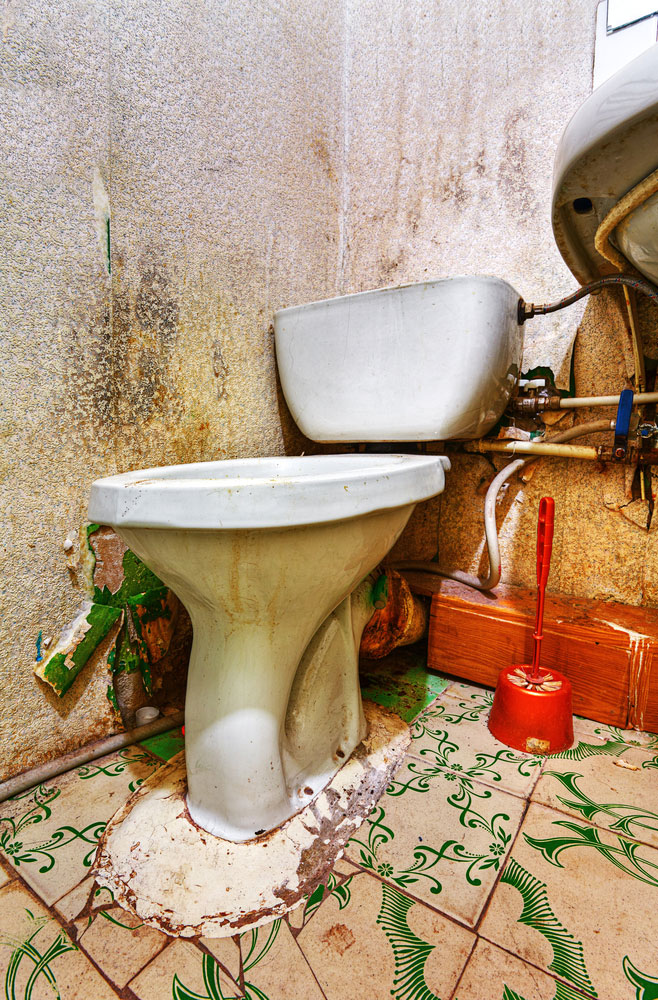Almost everyone is bound to have his or her own assumption about How to Prevent Bathroom Water Damage.

The bathroom is incredibly vulnerable for moist accumulation and potential water damage due to the regular use of water in it. This short article uses basic assessment strategies to aid identifying water damages threats.
The constant use water in the shower room makes it very prone for wet build-up as well as prospective water damage. By inspecting it consistently, you can lower water relevant problems.
The complying with set of assessments is simple to do as well as must be done when in every 3 months in order to maintain your bathroom in good shape and to prevent potential water damages triggered by the tub, the shower, pipe joints as well as plumbing, sinks, cupboards, as well as the toilet
Do not overlook performing these evaluations and also be complete while doing them. Bear in mind that these easy examinations can conserve you a great deal of money by offering early indications for water damages
Sinks and also Cabinets
Sinks and also cupboards are subjected to moisture and moisture day-to-day and are usually forgotten. Examine routinely under the sink and on the countertop over it. Repair any drip in the trap as it might recommend drain problems. Check out the sink, slow-moving draining pipelines may show an obstructed drain. Replace sink seals if they are fractured or loosened.
Bathtub and also Shower
The shower as well as bathtub need special focus and also maintenance. Examine the ceramic tiles and change if broken. See to it that there is no missing cement between the floor tiles. Examine and change cracked caulking at joints where the walls fulfill the floor or the tub. Clogged drains pipes and pipelines troubles will protect against the bathtub from drying out and might indicate significant issues beneath the tub. Seek advice from an expert quickly to avoid structural damages. Take notice of discolorations or soft locations around the bathtub walls as they might show an internal leak.
Plumbing
Signs for water damages are hard to discover given that many pipelines are installed inside the wall surfaces.
Pay special interest to floor covering and walls wetness as well as discolorations as they may suggest an unseen plumbing problem. Inspect dampness levels in adjoining spaces too.
The Toilet
The bathroom is a prone water joint. Examine the water lines and search for leaks around the commode seat, in the tube, and under the water tank. If you discover any kind of indicators of dampness on the floor around the bathroom, look for leaks in the toilet edge and tank seals.
Know that hanging commode bowl deodorants boosts the chances for clogs.
Water Damage Signs In The Bathroom To Avoid Cleanup
Musty smell
This is one of the easiest signs to catch because musty smells are so odorous. The damp, earthy, moldy smell should be a big red flag. The smell will develop when moisture gets trapped in surfaces, and begins to facilitate mold growth. Leaking pipes under cabinets, inside walls, and behind shower fixtures will cause moisture to stay trapped and not dry, which will lead to mold growth and spread. As soon as you notice any musty smells in your bathroom, have it checked for hidden water damage and cleanup signs.
Visible mold
If the smell isn’t there to give it away, sometimes you will actually see mold growth. Finding mold in your bathroom is a serious problem, because mold is very harmful to your health. By the time mold growth is visible, it also means that water damage has already occurred and been present for some time. The only way the mold problem can be resolved is to find the source of the moisture and get it stopped. To safely and adequately remove mold, you need to have professionals handle the remediation. Do not waste any time in getting mold problems addressed, fixed, and sanitized so that you can protect you and your family from the many respiratory symptoms caused by mold exposure.
Damaged floors
Bathroom floors should be able to withstand some exposure to water while still remaining in good condition. However, when excess exposure or water leaks occur, they will begin to damage even the most water-resistant flooring. If you notice any cracking, bubbling, staining, or warping on your bathroom floors, there is probably a water leak somewhere causing the distortion. If you notice areas of the floor have become softer, or even have a spongy feeling, there is probably damage to the subfloor. Subflooring is typically made up of plywood. When plywood is exposed to water or moisture, it will absorb it. Once it has become saturated, the weight of the excess water will cause the wood to swell and soften. Check the floors in your bathroom frequently to catch any of these sings before they lead to damaged subflooring.
Changes on walls
When water leaks behind walls, it will cause changes in the drywall. Peeling plaster, blistering paint, and soggy wallpaper are all good indicators that excess water is building up behind the wall. Water leaking behind drywall will cause it to swell and be soft to the tough. If you start to notice gaps along the trim of your walls, or where tile meets the wall, it could also be a strong indicator that there is a leak behind the wall. Any changes, distortion, or damage on the walls should be evaluated as soon as you notice it to prevent further water damage and cleanup.

Do you appreciate reading up on How to Prevent Bathroom Water Damage? Give a comment below. We'd be delighted to listen to your views about this write-up. Hoping that you visit us again later on. Are you aware of somebody else who is very much interested in How to Prevent Bathroom Water Damage? Why not promote it. Many thanks for your time invested reading it.
Request An Estimate